Byy James Agresti
Within a week of blaming “white supremacy” for the murder of six Asian and two white women by a white man in Georgia, progressives are now blaming “assault weapons” for a mass shooting in which a Trump-hating Muslim immigrant with a history of violence, mental illness, and racial animus gunned down 10 white people in a Boulder, Colorado supermarket.
Beyond the duplicity of highlighting race only when the killer is white and the victims are not, progressive lawmakers, activists, and journalists are using a litany of falsehoods in an attempt to ban common semi-automatic guns used for home defense and hunting.
AR-Style Rifles Are Not Weapons of War
The arrest warrant affidavit for the perpetrator of the Boulder massacre states that the killer purchased a Ruger AR-556 firearm less than a week before the shooting. Based on eyewitness testimony and a photo, the affidavit describes the two weapons found at the crime scene as a “semiautomatic handgun” and a “possible AR-15” or “assault rifle.”
The last of those descriptors, which presumably applies to the Ruger AR, is rooted in a common fallacy deflated by an article from the U.S. Army:
America’s most popular rifle—the AR-15—is often portrayed as being something it is not. Probably one of the more popular myths is that the “AR” stands for “assault rifle” or “automatic rifle.” It actually stands for “Armalite Rifle,” after the company that developed it in the 1950s.
ARs and other guns that progressives call “assault rifles” and “assault weapons” are modern semi-automatic guns that share some characteristics with military firearms but lack their defining feature—the ability to fire multiple bullets with the single pull of a trigger.
Instead, ARs can only fire one bullet with each trigger pull, while soldiers typically use automatic arms that can fire multiple bullets with a single pull. As explained in the book Military Technology:
By the late 1800s, soldiers were using automatic rifles and machine guns. These guns could fire many bullets with a single pull of the trigger. A machine gunner’s weapon fired hundreds of bullets each minute. He could point the weapon in the general direction of his enemy and fire. Even poorly-trained shooters could hit their targets. Automatic weapons made war a far more deadly business.
For modern soldiers, the most common military weapon is the AK-47 assault rifle. The AK-47 is not a very accurate weapon. It shakes and rattles when fired. But it can unleash about 700 shots per minute. As many as 100 million of these inexpensive rifles are in use in conflicts around the world.
Today’s U.S. military often engages in counter-terrorism operations that require precise targeting to minimize collateral damage—the opposite goal of mass killers. In such situations, soldiers need the option to fire semi-automatically, or one bullet at a time.
Thus, the “United States Armed Forces’ “weapon of choice” is the Colt M4 Select Fire Carbine, an assault rifle that comes in two models—both of which can change from semi-automatic to automatic with the flip of a switch. In one model, the automatic mode fires multi-bullet bursts with a single trigger pull, and the other model fires continuously when the trigger is pulled once and held down.
In stark contrast to the military’s use of automatic assault rifles and machine guns, U.S. federal law has generally banned civilians from possessing automatic weapons since 1986 with strict exceptions for those that were legally owned before then.
Yet in the wake of the Boulder tragedy, former president Barack Obama is calling for a law to ban “weapons of war” Likewise:
- S. Senator Dick Blumenthal (D–CT) is claiming that the Boulder shooter “had an assault weapon that can kill people with the efficiency and speed meant for the battlefield.”
- S. Congressman David N. Cicilline (D–RI), the sponsor of a new bill to “regulate assault weapons” that has gained 195 cosponsors (all Democrats), alleges that “assault weapons are designed for a single purpose—to kill as many people as possible in as short an amount of time as possible.”
- The New York Post editorial board called for a law to “get weapons of war off America’s streets.”
- S. Senator Chris Murphy (D–CT) asserts: “Military-style assault rifles were designed to kill as many people as quickly as possible. Period. There is no reason why these weapons should be sold to the public.”
- S. Senator Dianne Feinstein (D–CA) declared: “It’s time to reinstate the Assault Weapons Ban and get these weapons of war out of our communities.”
As documented above, all of those statements are patently false because such weapons have been banned since 1986. In fact, automatic weapons—or weapons of war—are so heavily restricted that the U.S. Department of Justice reported in 2016: “there is no evidence that” any legal owner of an automatic firearm was convicted of using one to commit a crime from 2006 through 2014.
Moreover, the 1986 ban on automatic weapons is not associated with a decline in mass shooting deaths, which it was supposed to prevent:
Deceitful Phrases
After successfully banning automatic firearms in 1986, gun control activists quickly moved to ban certain semi-automatic guns by misleading people to believe that they are military weapons. This strategy involved calling them “assault weapons,” a phrase that is almost identical to “assault rifles”—the most common type of military firearm.
In 1988, Josh Sugarmann, the founder of a gun control organization called the Violence Policy Center, wrote a booklet about a “new topic” of “assault weapons” in which he laid out this plan for banning them:
The weapons’ menacing looks, coupled with the public’s confusion over fully automatic machine guns versus semi-automatic assault weapons—anything that looks like a machine gun is assumed to be a machine gun—can only increase the chance of public support for restrictions on these weapons.
Journalists and politicians followed that playbook, and six years later in 1994, Congress and President Clinton succeeded in passing a 10-year ban on the manufacture, transfer, or possession of any “semiautomatic assault weapon” unless it was legally owned prior to the law’s enactment.
Since the law expired in 2004, many media outlets and lawmakers have dropped the charade of splitting verbal hairs between an “assault weapon” and “assault rifle.” Now, they apply both of those labels to semi-automatic guns. This change is evident from the nation’s leading authority on journalism lingo—the Associated Press Stylebook.
A decade ago, the 2011 Stylebook distinguished between an “assault weapon” and “assault rifle” as follows:
assault weapon A semi-automatic firearm similar in appearance to a fully automatic firearm or military weapon. Not synonymous with assault rifle, which can be used in fully automatic mode.
This pedantic farce evaporated over time, and the 2015 Stylebook combined the terms “assault rifle” and “assault weapon” into a single definition while stating that they “are often used interchangeably,” but “some” journalists “make the distinction that assault rifle is a military weapon….”
The use of similar and even identical terms to describe materially different firearms violates a basic principle of honest communication stressed in journalism guidebooks: “use jargon only when necessary and define it carefully.” Just the opposite, reporters and activists commonly use the phrases “assault weapon” and “assault rifle” to deceive the public, not to inform it.
As such, numerous media outlets reported in the wake of the Boulder shooting that the killer used an “assault rifle,” and the Violence Policy Center issued a press release in which Sugarmann declared:
Once again, a military-bred assault rifle was used for the exact purpose for which it was designed: to kill and injure as many people as quickly and efficiently as possible.
Home Defense & Hunting
While announcing a bill in 2021 to ban “military-style assault weapons,” U.S. Senator Richard Blumenthal (D–CT) claimed that they are “dangerous weapons of war that belong on battlefields” and “have no purpose for self-defense or hunting….”
Beyond the “weapons of war” canard, Blumenthal’s statement about self-defense and hunting is belied by:
- interviews with eight firearm experts for a 2015 article in the magazine Tactical Life which found that three of them use an AR-style rifle for home defense.
- a 2011 article in Outdoor Life reporting that “autoloaders and AR-style rifles are becoming more common in [hunting] camps and virtually every major manufacturer is producing these guns in calibers heavy enough to drop deer, hogs and bears.”
Blumenthal also alleges that such weapons have “no business being in our schools, churches and malls,” but the fact of the matter is that a former NRA instructor named Stephen Willeford used an AR-15 to stop a church shooting in Sutherland Springs, Texas during 2017. Underscoring the deceptive reporting of major media outlets:
- CNN, USA Today, NPR, Business Insider, CBS Chicago, and the New York Times all ran stories that described Willeford’s AR-15 simply as a “gun” or “rifle” (Hat tip: Carl Arbogast).
- the very same media outlets described the AR-15 of the person who attacked the church as a “military-style rifle” (CNN, USA Today, NPR, Business Insider, CBS Chicago, New York Times).
Compared with older firearm designs, modern semi-automatic rifles have features that can make them ideal in some situations for home-defense. This includes but is not limited to:
- low recoil, which enhances steadiness and accuracy while shooting.
- a pistol grip, which makes the gun “comfortable and adaptable” to most hand sizes.
- detachable magazines, which allow for greater ammunition capacity and quicker reloading.
Magazine Capacity
People who are seeking to ban modern semi-automatic rifles often couple that with banning “high-capacity” magazines, typically defined as those that hold more than 10 rounds. Detachable magazines (or “mags” for short) are devices that hold and feed ammunition into the vast bulk of semi-automatic guns. Larger magazines are a tactical advantage because they allow the shooter to fire more bullets without reloading.
However, a trained gunman can swap out a mag in one second if he is prepared. This means that mass shooters can effectively bypass the mag capacity restriction simply by bringing multiple mags to the attack. In contrast, it is not practical for the many millions of citizens who legally carry concealed firearms to keep a stockpile of mags on their waist. Thus, magazine capacity restrictions give a strategic edge to the killers over law-abiding citizens who carry a gun to protect themselves and others.
Like many black market products, gun magazines are easy to transport and inexpensive to manufacture. The price of a 33-round mag for a common handgun is only $18.95, which begs the question of whether a ban would keep them out of the hands of criminals who are intent on murder. This asymmetric access would give criminals an even greater advantage over law-abiding citizens who are limited to 10 rounds.
Phony Statistics
Democratic Senator Dianne Feinstein—the sponsor of a 2021 bill that has gained 35 cosponsors to “regulate assault weapons”—claims that the 1994 ban on such guns and magazines that hold more than 10 rounds saved lives because:
- “when it was in place from 1994–2004, gun massacres declined by 37% compared with the decade before.”
- “after the ban expired, the number of massacres rose by 183%.”
Those statistics are inaccurate, cherry-picked, and misinterpreted in the following ways:
- Feinstein’s claim that the law saved lives is not measurable by a count of “gun massacres” because there is enormous variation in the number of lives lost in each mass shooting. For example, 27 people were killed in the 2012 Sandy Hook school shooting, while no people were killed in 1,278 incidents that the Gun Violence Archive classified as “mass shootings” during 2017.
- Less than 1% of all murders in the U.S. occur in shootings where four or more people are killed—an academic definition of mass shootings. Because such tragedies are relatively rare and vary significantly from year to year, examining a short timeframe like 10 years can be misleading.
- The ban did not begin until the last 3.5 months of 1994, and production of these weapons in 1994 was more than twice that of a typical year because people wanted to get them before the ban took effect. In fact, a 2002 paper in the Journal of Quantitative Criminology found that the ban “produced the unintended consequence of making AWs [assault weapons] more accessible” through at least mid-1996. Hence, it is misleading for Feinstein to include the low-death years of 1994 to 1996 in the period for which the law “was in place.”
- The portion of the U.S. population killed in mass shootings—a rational measure of such carnage—was only 12% higher in the decade after the ban expired. This is nowhere near Feinstein’s factoid of a 183% rise in “massacres.”
Most deceitfully, Feinstein’s statement and a similar one by President Biden in which he alleged that the 1994 law “brought down these mass killings” suffers from the sophomoric myth that association proves causation. Students are taught to avoid this fallacy in high school, but reporters, commentators, and even scholars still fall into this trap. In the words of an academic textbook about analyzing data:
Association is not the same as causation. This issue is a persistent problem in empirical analysis in the social sciences. Often the investigator will plot two variables and use the tight relationship obtained to draw absolutely ridiculous or completely erroneous conclusions. Because we so often confuse association and causation, it is extremely easy to be convinced that a tight relationship between two variables means that one is causing the other. This is simply not true.
The reason this is not true is because numerous other factors can affect societal outcomes like mass shootings, and there is frequently no objective way to isolate and quantify the effects of a single factor.
With regard to the 1994 ban, some of the many factors that could be at play during this era include the following:
- The very same 1994 law that enacted the firearm and magazine restrictions also contained a massive array of measures to reduce violent crime, like a requirement that “persons convicted of violent crimes serve not less than 85 percent of the sentence imposed or meet other specified requirements.”
- Wall-to-wall media coverage of mass shootings, which began with the Columbine school massacre of 1999, has since motivated many copycat killers seeking fame.
- The decade the ban was in effect had several years of rapidly falling murder rates.
Using the childish logic of Feinstein and Biden, one would be forced to conclude that the right-to-carry law enacted by Florida in 1987 is responsible for the massive drop in murder rates that occurred in its wake:
Mental Illness
As with other infamous mass shootings in which the killers previously showed clear signs of mental illness (like Sandy Hook, Parkland, Virginia Tech, Aurora, Orlando, and Tucson), evidence of mental instability on the part of the Boulder killer has come to light.
In response, certain media outlets are reporting that “mental illness is not an indicator of violence“ and that “people with mental illnesses are more likely to be victims of violence than perpetrate it.”
While it is true that the majority of people with psychiatric disorders are not violent, this sidesteps the fact that the perpetrators of mass shootings are far more likely to suffer from serious mental illness than the general public. This is especially true of people who commit indiscriminate mass shootings in which an attacker wantonly kills people in a public setting like a school, park, or church.
Per a 2020 paper in the journal Criminology & Public Policy, 35% of the people who committed indiscriminate mass shootings from 1976 to 2018 had paranoid schizophrenia, and 60% of the shooters “had been either diagnosed with a mental disorder or demonstrated signs of serious mental illness prior to the attack.”
In comparison, less than 1% of the U.S. general population have schizophrenia or a related disorder, and 4.6% of noninstitutionalized U.S. adults have a serious mental illness.
Again, it is important to remember that association does not prove causation, but there is a very strong correlation between the rise of indiscriminate mass shootings and the mass deinstitutionalization of psychiatric patients that occurred in the U.S. from 1955 to around 2010.
During that period, the portion of the U.S. population in public psychiatric hospitals declined by 96%. Highlighting the implications of this, a 1997 academic book about “America’s Mental Illness Crisis“ explains:
- “The magnitude of deinstitutionalization of the severely mentally ill qualifies it as one of the largest social experiments in American history.”
- About “763,391 severely mentally ill people (over three-quarters of a million) are living in the community today who would have been hospitalized 40 years ago.”
In the periods before, during, and after mass deinstitutionalization, the average annual rate of indiscriminate mass shootings in the U.S. changed as follows:
Media outlets like the Washington Post and New York Times claim that the only material difference between the U.S. and developed countries with lower murder rates is that America has more guns. Thus, they conclude that guns must be the problem while commonly using Japan as a comparison because it has very low gun ownership and murder rates.
In reality, however, a major difference is that the U.S. has one of the lowest rates of psychiatric institutionalization in the developed world, and Japan’s rate is about 10 times greater:
Summary
In the wake of the Boulder supermarket massacre and other mass shootings, progressive activists, politicians, and journalists have misled the public about major aspects of these tragedies. In contrast to their claims:
- Less than 1% of all murders in the U.S. occur in mass shootings, defined as shootings where four or more people are killed.
- The defining feature of firearms commonly used in war is that they are automatic and have the capacity to fire multiple bullets with the single pull of a trigger.
- AR-15s and other guns that progressives call “weapons of war” are actually semi-automatic guns that can fire only one bullet with each pull of a trigger.
- Federal law has generally banned civilians from possessing military firearms— including machine guns and assault rifles—since 1986.
- The 1986 ban is not associated with a decline in deaths from mass shootings.
- Two years after automatic firearms were banned, progressives moved to ban certain semi-automatic guns by calling them “assault weapons,” a phrase that sounds like “assault rifles”—the most common type of military firearm.
- A leading gun control activist wrote that their strategy to achieve a ban would take advantage of the “public’s confusion over fully automatic machine guns versus semi-automatic” guns.
- The guns that progressives are now seeking to ban are popular firearms used for home-defense and hunting.
- Federal law banned such guns along with magazines that hold more than 10 rounds from September 1994 to 2004.
- Magazine capacity restrictions give a strategic edge to the killers who plot mass shootings over law-abiding citizens who carry a gun to protect themselves and others.
- Bearing in mind that association does not prove causation, the portion of the U.S. population killed in mass shootings in the decade after the ban expired rose by 12% compared to the decade while the ban was in effect.
- The weapons banned in 1994 became more accessible in the early years of the ban.
- Some infamous mass shooters have stated they were motivated to kill for the fame that the media bestows on the perpetrators of such massacres.
- Perpetrators of indiscriminate mass shootings are far more likely to suffer from serious mental illness than the general public.
- Bearing in mind that association does not prove causation, the average annual rate of indiscriminate mass shootings rose by more than five times along with the mass psychiatric deinstitutionalization that occurred in the U.S. from 1955 to 2010.
- The U.S. has one of lowest rates of psychiatric institutionalization in the developed world, and Japan’s rate is about 10 times greater.
[Originally posted on Just Facts Daily. Republished with permission.]


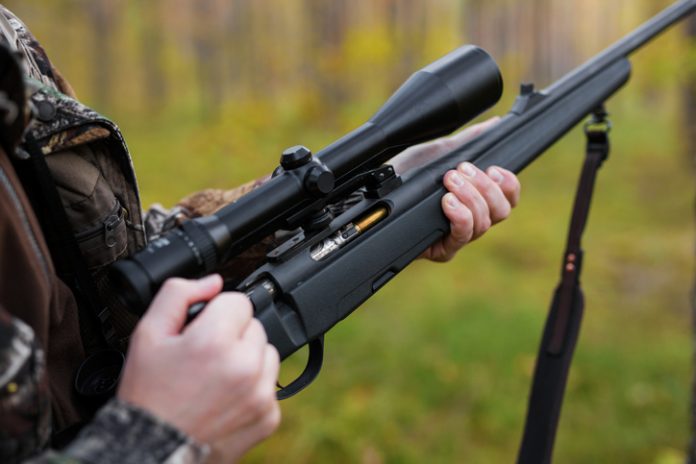
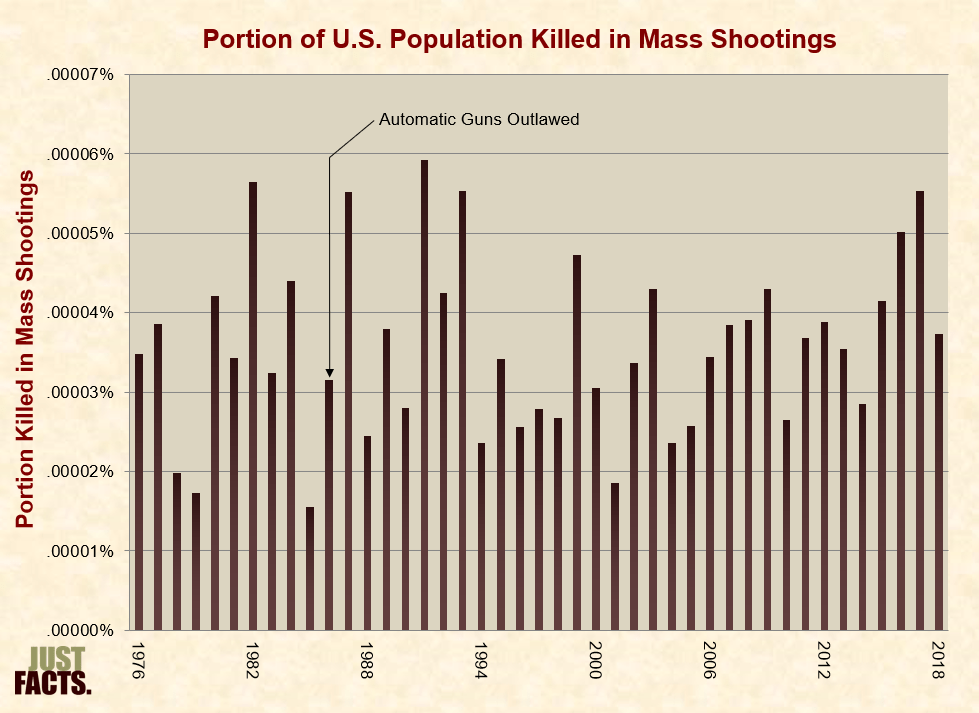
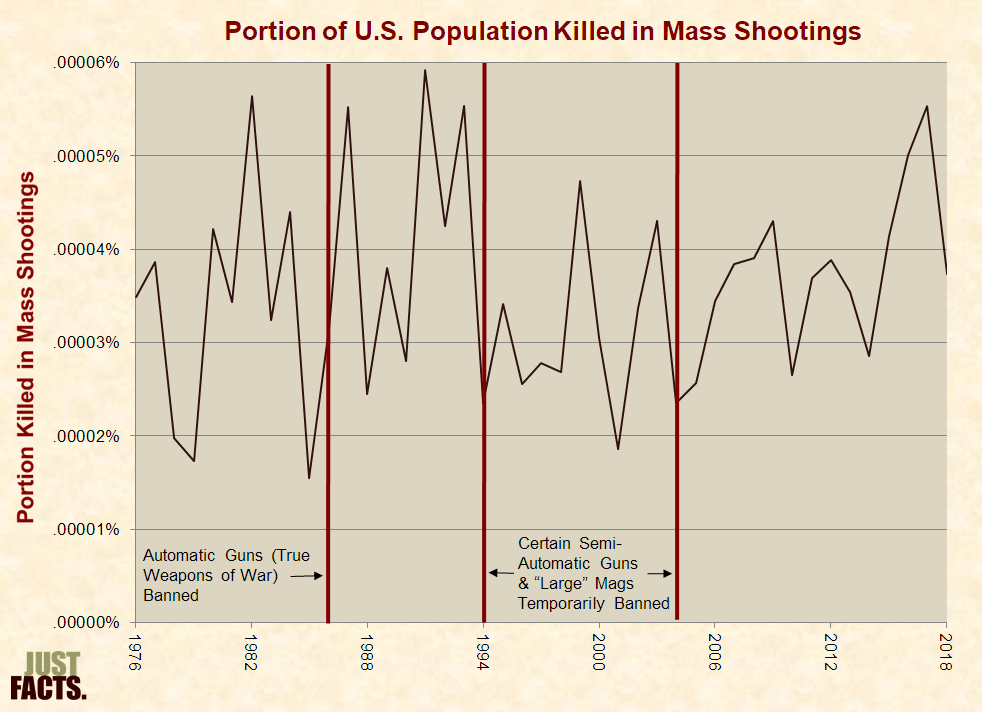
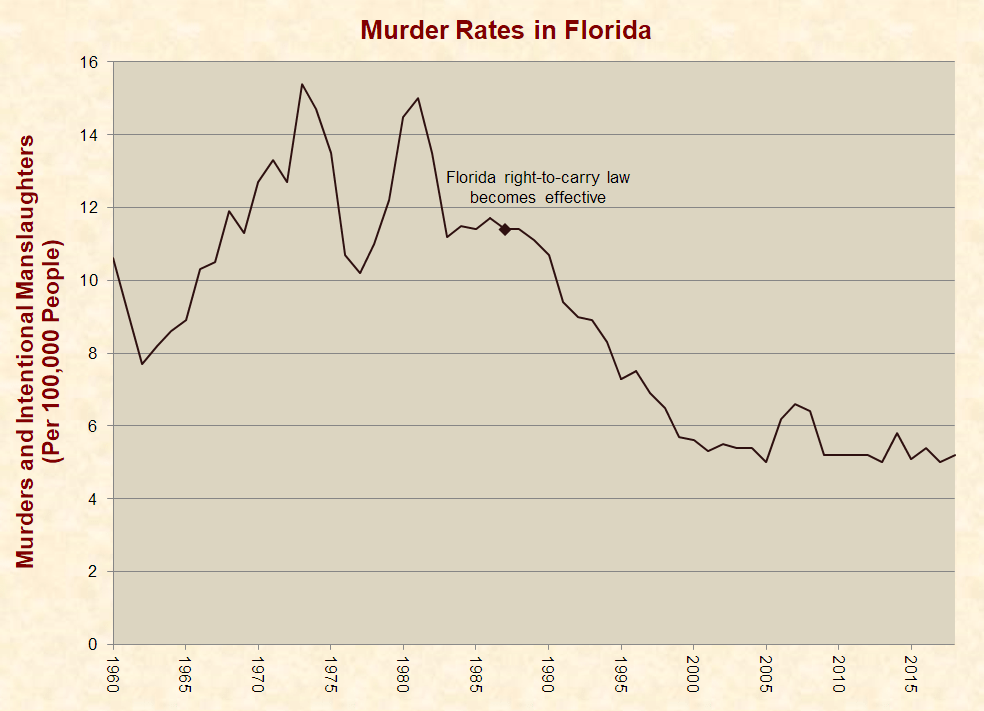
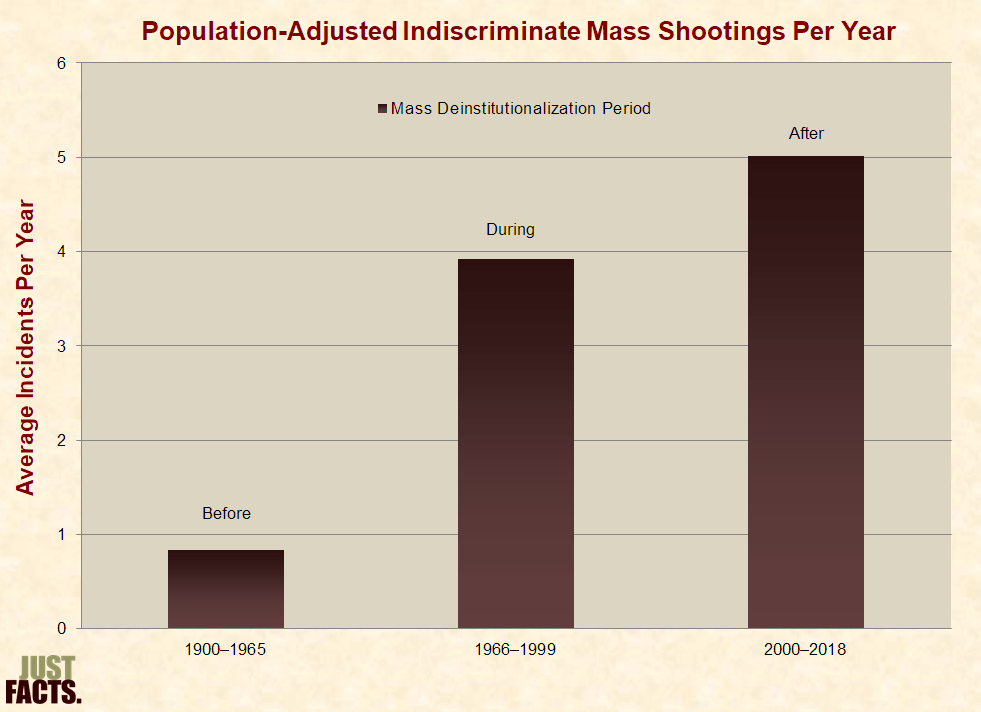
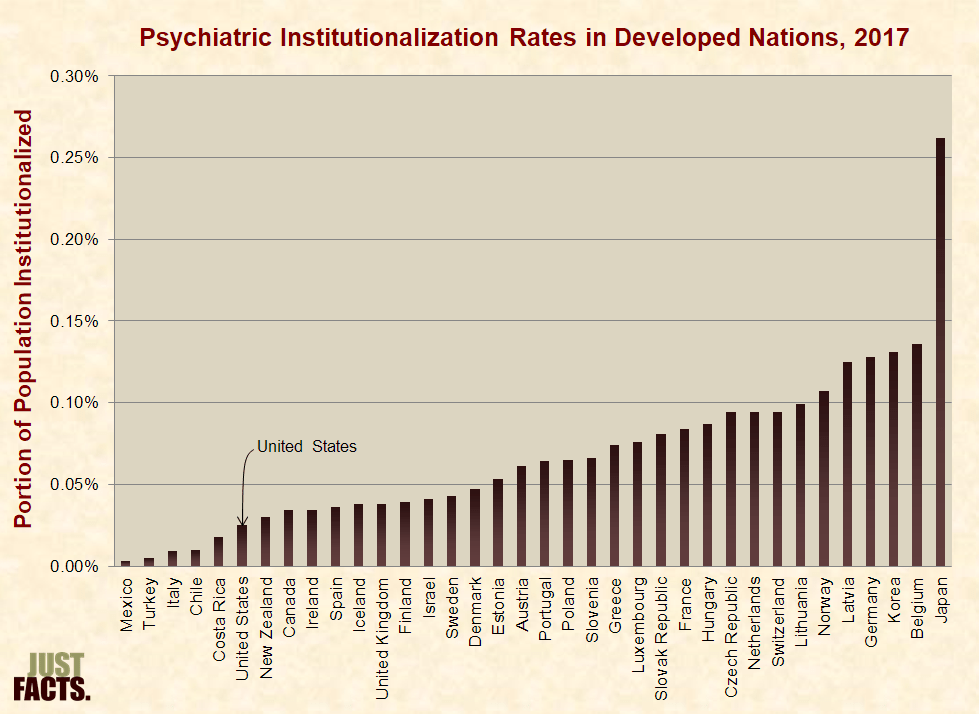









Obviously, a complex, multi-faceted and “nuanced” challenge that requires a thoughtful approach. I think all responsible U.S citizens agree that we have a developing phenomenon (mass shootings) over the past couple decades that somehow, needs to start being addressed. However, this discussion should not be limited to mass shootings. The “epidemic” in gun violence is predominantly associated with handguns & gang related activity. Many inner cities (i.e. Chicago, NYC, etc.) have erupted into “war zones” and semi-automatic hunting rifles (long guns) rarely factor into any of that. Like so many other things, especially when discussing second amendment rights, we have to have an HONEST discussion and attendant debate. Based on what I am observing with the ongoing Democratic playbook, I won’t hold my breath…